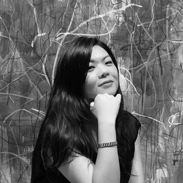Artists
The Unexpected Art Star of the Fall Season? A Franciscan Friar Making Textile-Based Art in Rome
Sidival Fila makes art out of unused ancient fabrics and finds a balance between contemporary art and religious life.
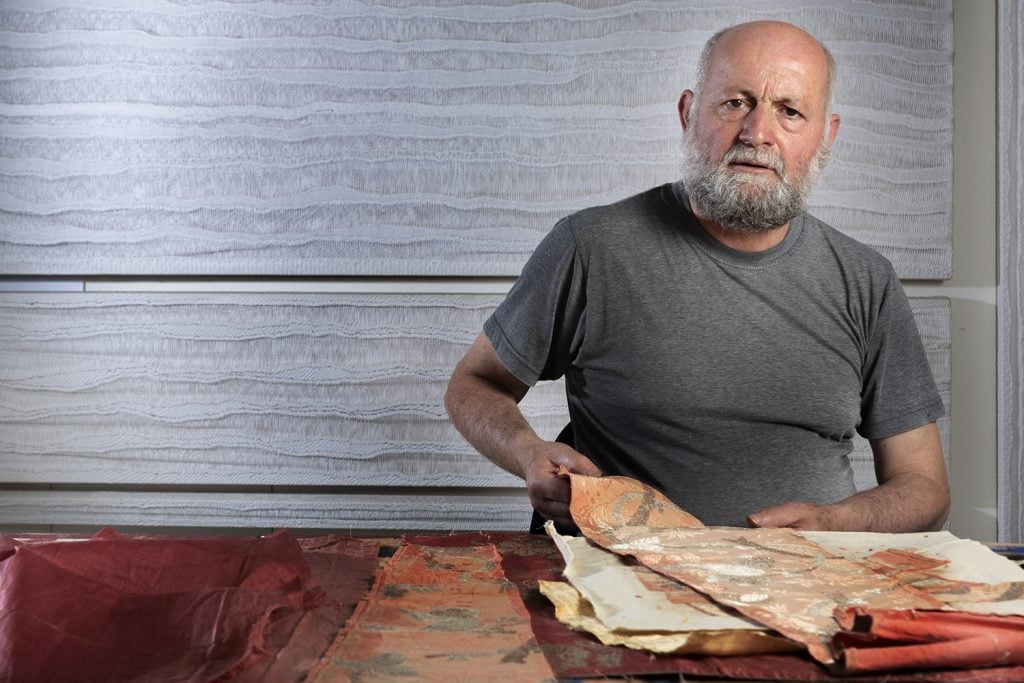
At Art Basel this past June, curious art spectators were drawn to the work of a new, buzzed-about artist at the booth of Paris’s gallery Mennour. The artist was not a fresh graduate on the rise or a current market darling but had already generated sizable interest ahead of a debut solo exhibition slated for September.
Meet Sidival Fila, a Brazilian-born Franciscan friar who is also a contemporary artist. Fila lives and works at the Convent of the Franciscan Friars of San Bonaventura al Palatino in Rome, Italy. Born in 1962 in Parana, Brazil, Fila initially pursued painting and his love for art brought him to study in Europe. His passion for art was interrupted when, at the age of 25, he heard his calling and decided to pursue a religious life, joining the Order of the Friars Minor of St. Francis of Assisi.
But in 2006, Fila rekindled his art practice after coming across antique, unused fabrics from centuries ago. Today, Fila’s oeuvre, which involves meticulous stitching, sewing, embroidery, and repurposing these unused garments, seems to give new life to the discarded materials. But to him, his art which involves recovering and restoring centuries-old fabrics that are not in use, is about redemption, rather than material reuse.
His works, mounted on canvas frames, have been widely exhibited, including solo shows at the Vatican Library and Museo Bilotti of the Villa Borghese in Rome, as well as a site-specific installation titled Golgotha at the Venice Pavilion in the 2019 Venice Biennale. His works have also been exhibited at art fairs, but he does not take profits from the sales of his works—they go to charitable causes especially those related to children.
We caught up with Fila at his studio at the convent overlooking the Colosseum in Rome ahead of his upcoming solo exhibition “A rose is a rose is a rose” at Mennour which will feature recent works in linen, cotton, silk and more (on view from September 7 to October 5).
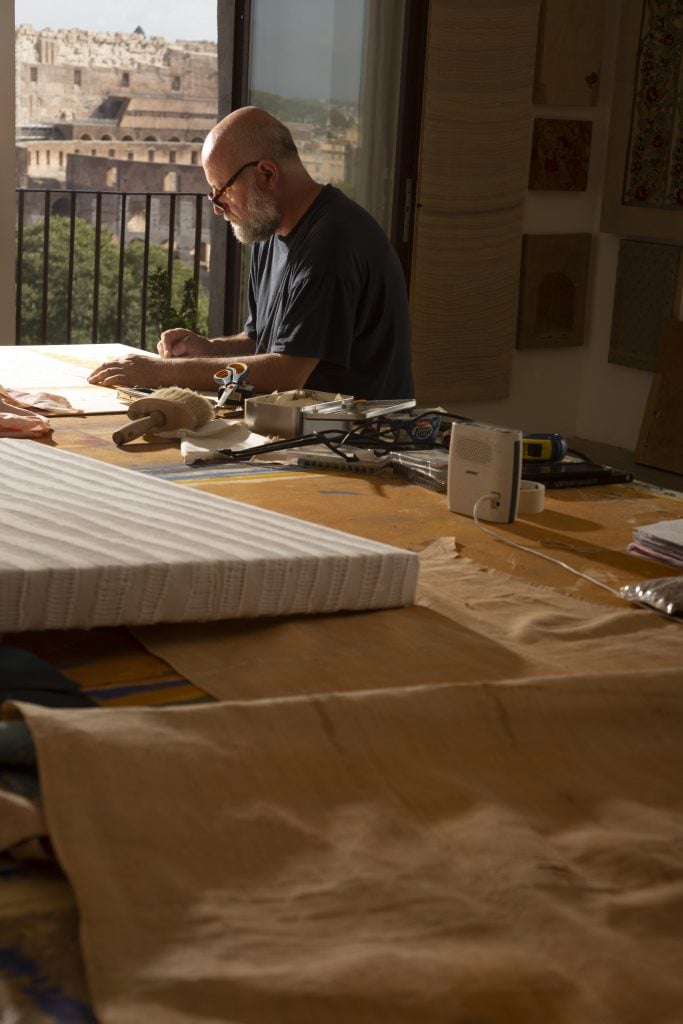
Sidival Fila at his studio, which has a view on the Colosseum. Courtesy of Sidival Fila Foundation. Photo credit Mario Coppola.
Tell us about your studio. How does it compare to other studios you’ve had? Where is it and what kind of space is it?
My studio is located on the fourth floor of the Convent of Saint Bonaventure on the Palatine Hill, an original 17th-century convent located in the archaeological area of the Colosseum Park, with a 360-degree view of the archaeological site, including both the Colosseum and the Emperor’s Palace. The great advantage of this space for my work is that I feel as if I am suspended above the city and surrounded by so much majesty, which teaches me about beauty.
What are your studio routines? Can you tell us about your working hours at your studio? What does a normal day working at your studio look like?
I spend about 10 hours a day in the studio, every day of the week. I arrive at 9 a.m. and work until 12.30 p.m., in the afternoon from 3.30 p.m. to 7 p.m. and in the evening from 9 p.m. pm to 10.30 p.m. It is a studio that is very open to the public, where I am often interrupted by visitors while I am working.
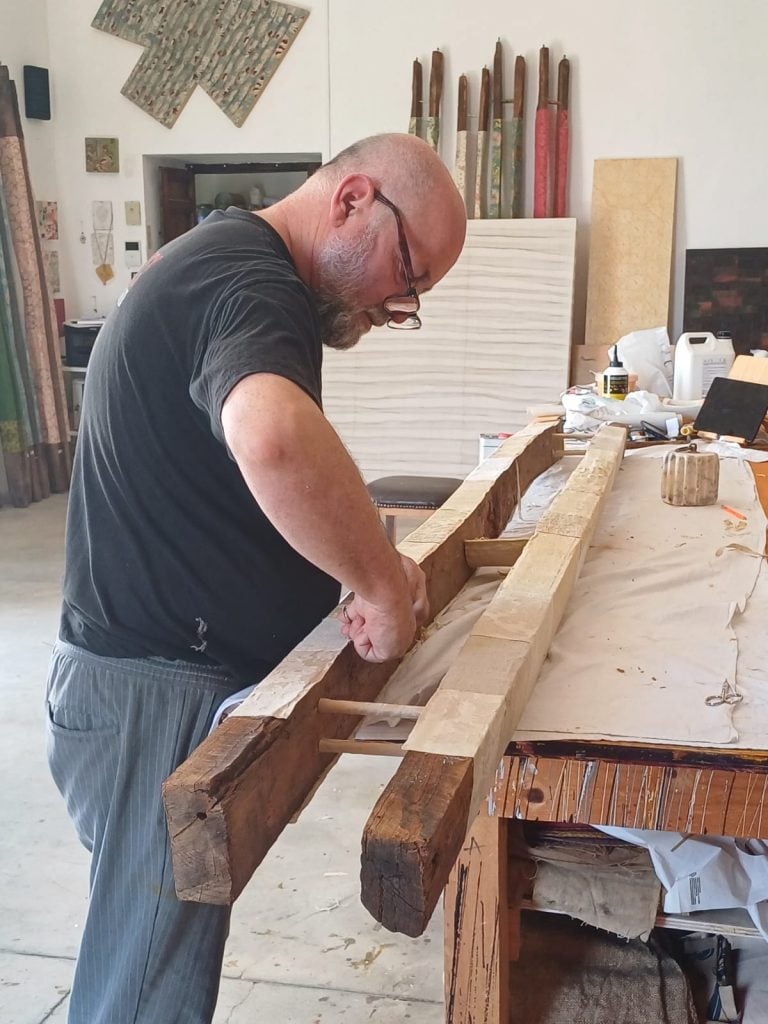
Sidival Fila is working on the upcoming exhibition at the Fondazione Memmo at his studio. Courtesy of Sidival Fila Foundation.
What is the first thing you do when you step into the studio during the day? And the last thing you do before you leave?
The first thing I do in the morning is to organize my working day, and then I start work immediately. In the evening, when I finish my work, I go to say my prayers and then rest.
What are you working on right now? Please send us a few photos of a work in progress—or photos of different works in various states of completion—in a way that you think will provide insight into your process.
I have just completed a project for a solo exhibition that will open in Venice on September 13, 2024, at the Scuola Grande di San Marco. I am currently working on a site-specific solo exhibition at the Fondazione Memmo in Rome.
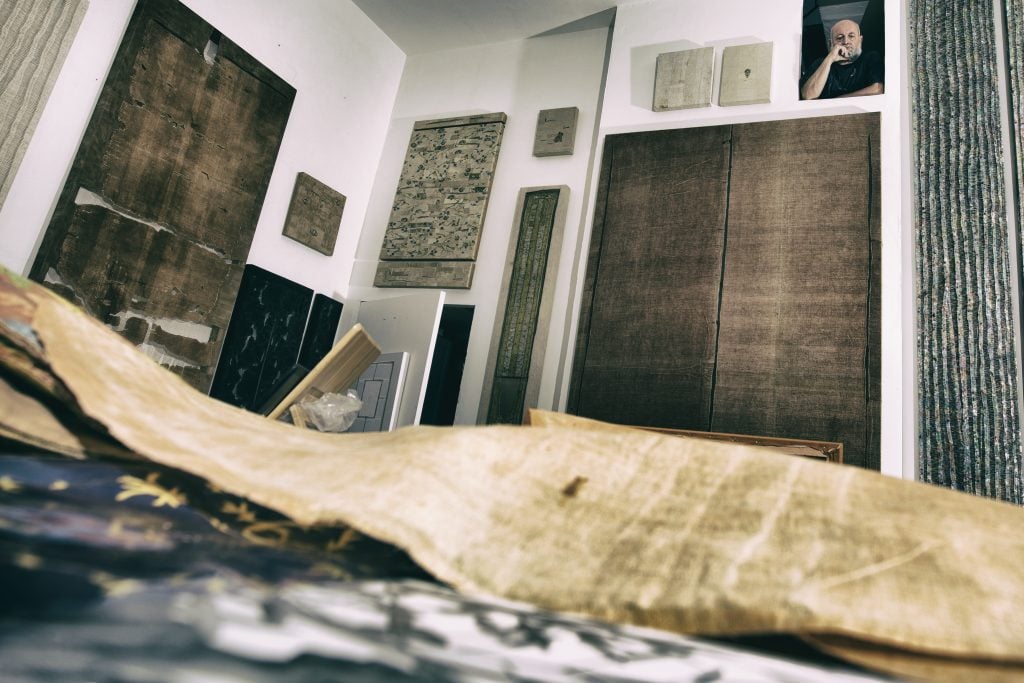
Sidival Fila observing his works in progress in silence in silence. Courtesy of Sidival Fila Foundation. Photo credit Mario Coppola.
What kind of atmosphere do you prefer when you work? Is there anything you like to listen to/watch/read/look at etc. while in the studio for inspiration or as ambient culture?
With the exception of the moments when I plan the work, I observe strict silence. During the work, I enjoy listening to topics on geopolitics, economics, and spirituality. In the past, I liked to work while listening to classical music, whereas today I feel the urge to be present for the events happening in the world to experience and share contemporary reality.
When you feel stuck while preparing for a show, what do you do to get unstuck?
I rarely feel stuck in my work, but when I do not have the inspiration to do major works, I don’t stop, but maybe I’ll work on small works or tidy up the studio.
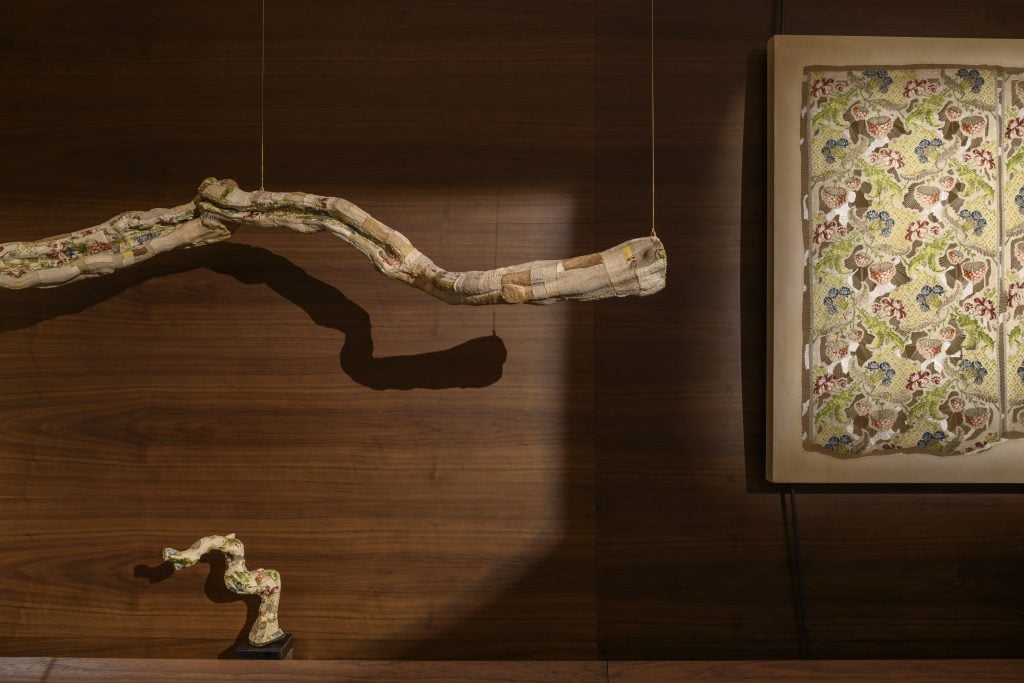
Sidival Fila’s exhibition at the Vatican Library, featuring sculptures and artwork made with 18th-century jacquard silk. Courtesy of Sidival Fila Foundation. Photo credit Mario Coppola.
What tool or art supply do you enjoy working with the most, and why? Please send us a
snap of it. Or is there anything in your studio that a visitor might find surprising?
The material that inspires me most is ancient textiles, dating back to around the 17th and 18th centuries. Textiles are highly symbolic, they are man’s first architectural gesture. They carry with them the memory, the time that has passed, and the experience of the people who used them, with all their expressive power. Visitors are usually surprised by the unique look and the possibility of seeing so many of my works hanging as though in a gallery.
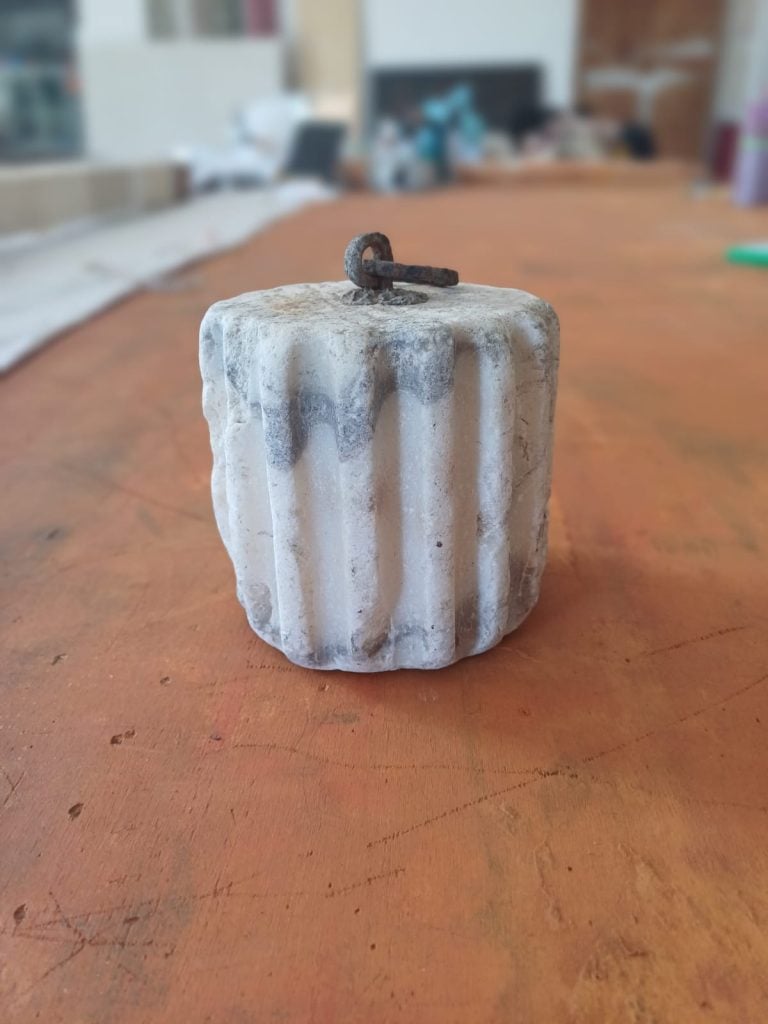
The small piece of a Roman column from around the 1st century. Courtesy of Sidival Fila Foundation.
What’s your favorite studio item? It can be an artwork, a tool, or an object in your collection. Can you please tell us why?
The small piece of a Roman column from around the 1st century, used later in the 17th century as a counterweight for a door. For me, this object is highly symbolic and inspiring in regards to the possibility of reusing and giving new meaning to an object.

